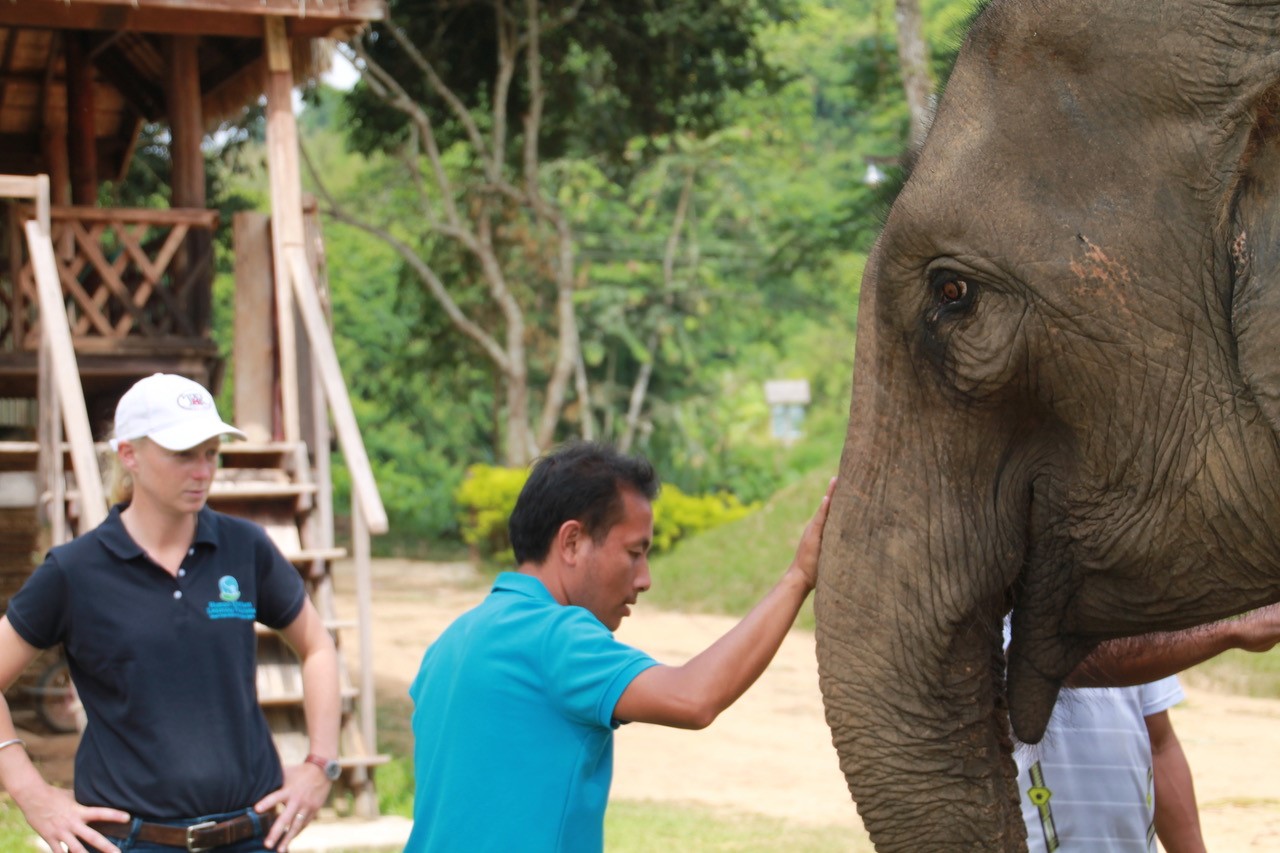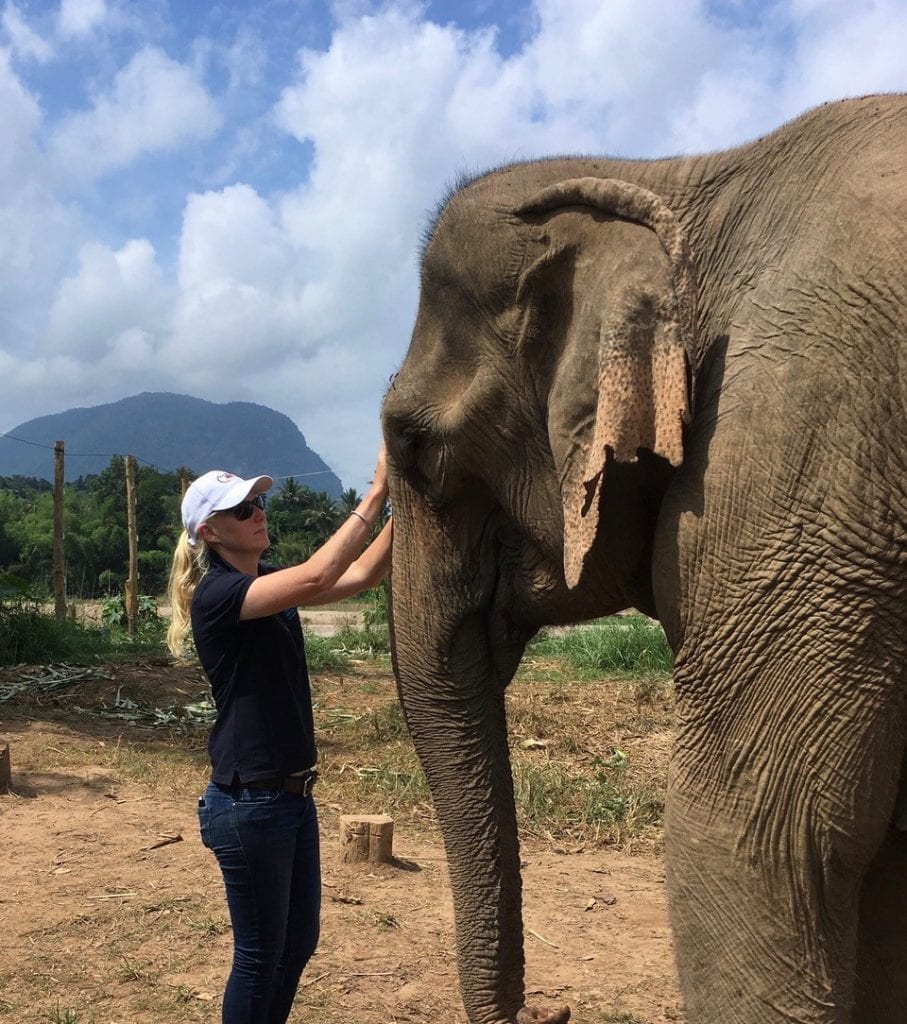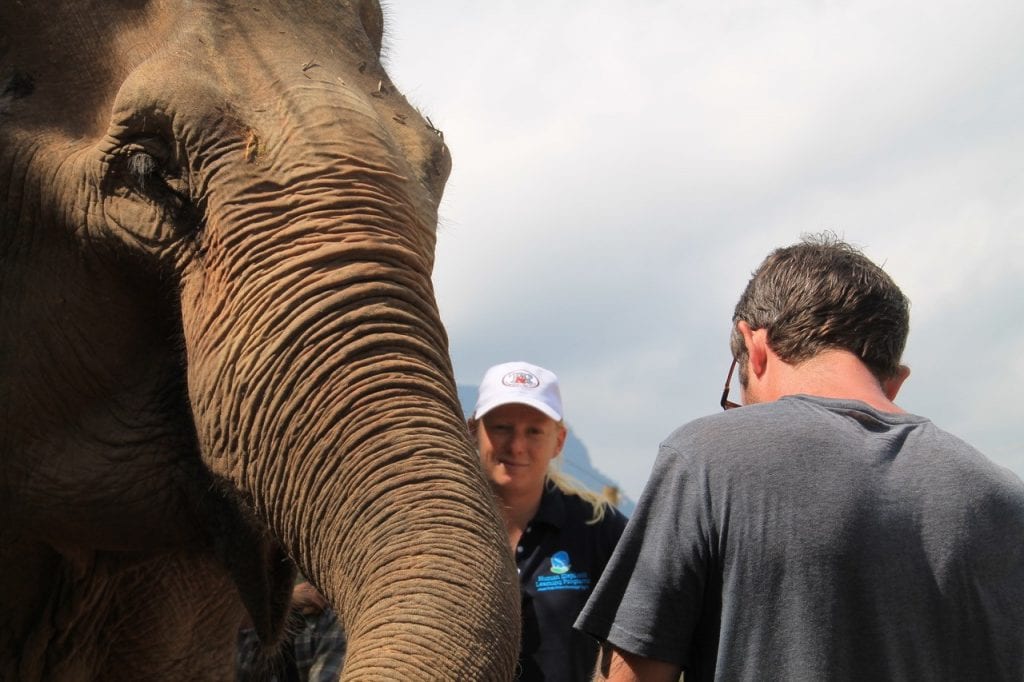
25 Oct The difference between elephant training and horse training
Thompson & Redwood sponsored rider, Sophie Warren, is currently on a training trip in Laos and Thailand with the Human Elephant Learning Programs Foundation. Here are her thoughts on the differences and similarities between elephant and horse training.
The elephant is a species at a crossroads. Caught between 5000 years of tradition, an ever diminishing habitat and a growing tendency towards anthropomorphism.
Most people will never get to see an Asian elephant in the wild – those days have long passed… The question we face now is how to train and manage the captive elephant population so that our children and grandchildren can see them outside of petting zoos and picture books.

As a horse trainer I privilege evidence based training systems so I’m always looking at things with my scientific goggles on. I like to think they strip back the years of anthropomorphic thinking and the notion that the horse is there to do a job for us and help us to train according to the ethology of the horse and the scientific principles of learning. This background in equitation science has really helped me to be confident embarking on only my second trip with elephants.
Without the human the horse would be extinct, the same could easily be true of elephants in a matter of years so it is important that we find a place for them in tourism because there is very little natural habitat left. While logistically more difficult to keep because of their size, food requirements and how much space they need and the number of miles they need to walk each day, it seems to me that if the training is done in an ethical and evidence based way it’s no different to keeping a horse.
As a horse trainer I’ve also done work training camels, dogs, and our own cats. At home we use the principles of equitation science in both our foundation training programs and for re-training of ex-racehorses and solving behavioural problems in difficult horses. Fascinatingly, the uptake of behaviours seems to happen at a very similar rate across the species we’ve worked with. Camels and elephants are slower in their movements and less flighty than horses which changes some of the initial focuses of the training but effectively they are both big, strong, fast and potentially dangerous animals so the training initially begins with controlling the movements of their legs.
The scientific understanding of learning and behaviour is only around half a century old, on the other hand elephant training, like horse training, is around 5000 years old and steeped in tradition and folklore. It is easy to see why science is slow to gain traction in these deeply traditional practices, just like it is in the equestrian industry.

At every clinic we run, we are received with open minds when we go to various countries to train elephants and mahouts (elephant trainers). It’s pretty exciting to see that these trainers are willing and excited to think about training in a more scientific way and make sure training and management are done in the best way possible.
Elephants are highly social animals that live in open or closed woodland habitats. They are grazing/browsing animals and live in large family groups led by a matriarch where cooperation underpins all social behaviours. Like horses, they typically need to eat for around 13 hours per day and move about 12-17 kilometres per day depending on food availability. They are very social animals. The similarities between the horse and the elephant are more than you would think!
You can find out more about the Human Elephant Learning Programs Foundation here.



No Comments